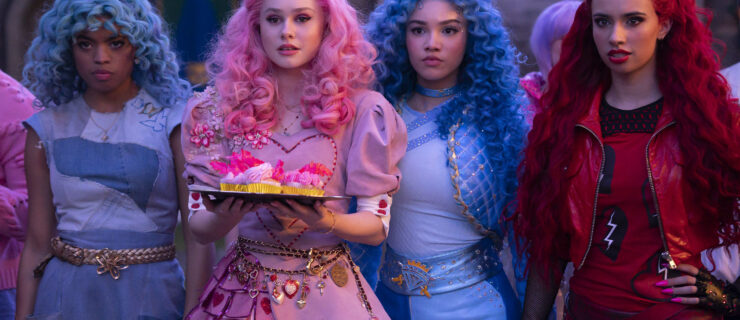San Francisco Ballet's Vanessa Zahorian Talks About Dancing Aurora
Vanessa Zahorian has been on the fast track ever since she joined San Francisco Ballet in 1997. She attained the rank of principal dancer in just five years. And over the last decade, she has continued to impress her audiences in a wide range of classical and contemporary works.
Last season, Vanessa made headlines with her portrayal of Aurora in Helgi Tomasson’s The Sleeping Beauty. Here, she shares her thoughts on this technically and artistically demanding role.
Dance Spirit:
In the Rose Adagio, Aurora balances in back attitude while her suitors step toward her one by one and take her hand. What’s going through your head in that moment?
Vanessa Zahorian:
I’m thinking, “Pull up!” Actually, I’m not trying to think about the step, because you do it so much in the studio. I’m thinking about the presentation, looking at my suitors and at the audience, and making it look like it’s not hard.
DS:
Do you have a signal that alerts your partners when you’re having an off day and you need them to hold your hand longer during balances?
VZ:
They can feel if you’re ready or not. You just balance, and they have to be there. They have a big responsibility to be in the right position, and it takes hours in the studio. You have to do it every day.
DS:
Have you ever fallen?
VZ:
In the studio, of course—but not onstage.
DS:
What are some other technical challenges with Aurora?
VZ:
Aurora has variations every act. After the Rose Adagio, you’re tired but you have to compose yourself for the variation that comes after. Because The Sleeping Beauty is so basic and pure, you don’t want to let the audience see the work.
DS:
How do you learn to dance Aurora’s difficult steps effortlessly?
VZ:
It’s not something that you learn. Someone can remind you of it, but you have to find it on your own through experience. Dancing many years in a company and doing the hard roles that I’ve gotten to do, you just find the way to make it look effortless. It’s a feeling.
DS:
What should first-time Auroras know?
VZ:
It’s all about the process and the good and the bad days. It takes time. It’s not going to come the first day.
DS:
How has your portrayal of the role evolved over the years?
VZ:
[The first time I danced Aurora,] I was focusing on the technique. I was in a new company, it was my first full-length and I was 20. I didn’t have much experience. Years later, I don’t need to think about the technique as much, so it’s easier to relax into the role.
DS:
How do you keep Aurora fresh and interesting for yourself?
VZ:
I think what makes a ballet die is if you do it hundreds of times. We’re not a company that does the same thing every year. Our rep is so diverse that you don’t get bored.
DS:
Do you wear the same pair of pointe shoes for all the acts?
VZ:
I do actually. I just feel so into my shoe. [Vanessa starts each show with new shoes.]
DS:
When the Prince wakes you up, what are you thinking? Technically, you’re being kissed by a stranger!
VZ:
In the story, you don’t know how you woke up. You don’t feel the kiss. I think about being realistic, how waking up would be, without thoughts of him being the one. So something triggered your heart, and you can show that with your improvisation.
DS:
What are your words of wisdom for all those young dancers who dream of following in your footsteps?
VZ:
I get this from my dad: When I have a challenge, he’ll say, “Be patient, it will come, don’t force anything.” If it’s not meant to be, something else will come along. Cherish everything that every teacher has said to you. There is something good from every teacher. And then make it your own, because in the end, it’s you onstage, not your teacher or coach.



